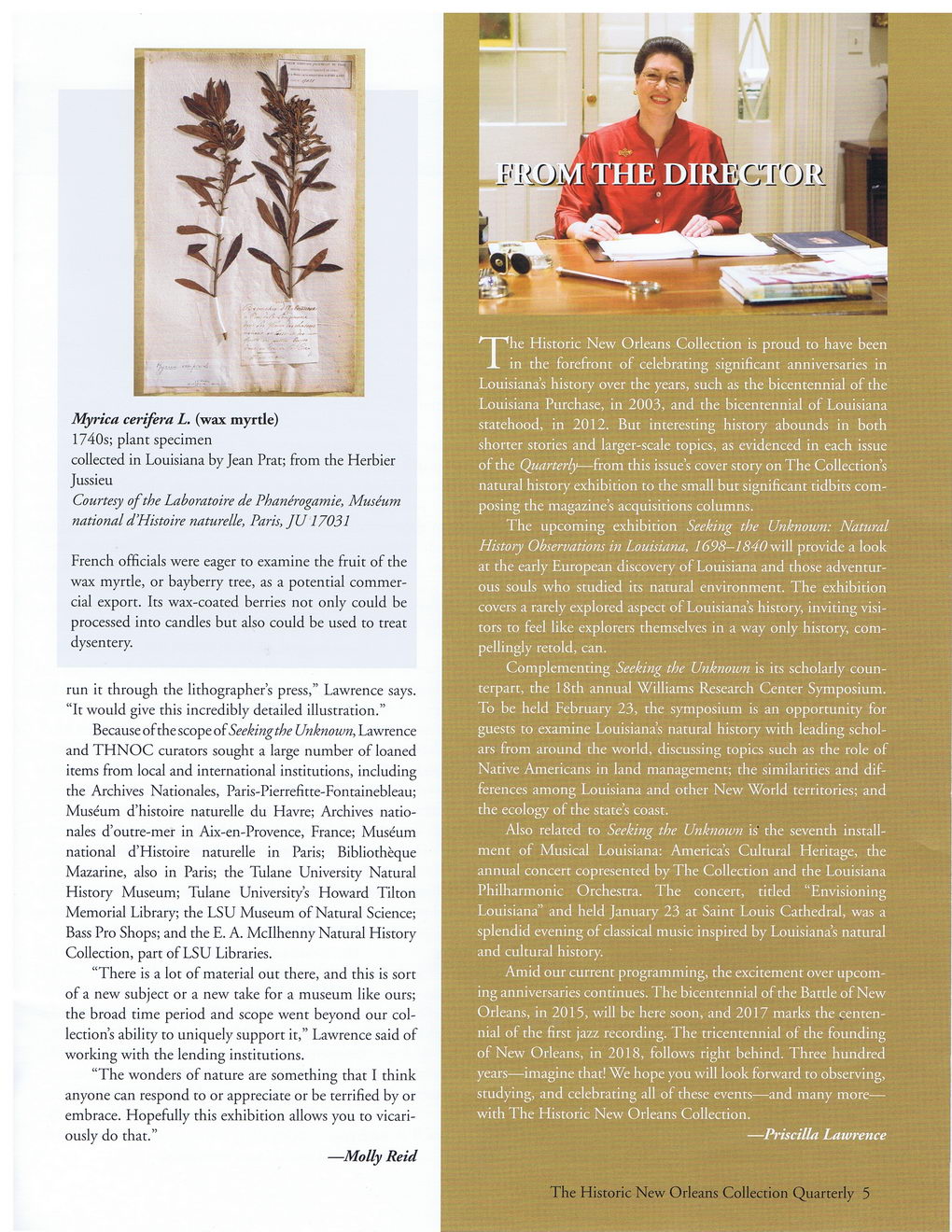This text was obtained via automated optical character recognition.
It has not been edited and may therefore contain several errors.
1 Myrica cerifera L. (wax myrtle) 1740s; plant specimen collected in Louisiana by Jean Prat; from the Herbier Jussieu national d’Histoire naturelle, Paris, JU17031 French officials were eager to examine the fruit of the wax myrtle, or bayberry tree, as a potential commercial export. Its wax-coated berries not only could be processed into candles but also could be used to treat dysentery. run it through the lithographer’s press,” Lawrence says. “It would give this incredibly detailed illustration.” Because of the scope of Seekingthe Unknown, Lawrence and THNOC curators sought a large number of loaned items from local and international institutions, including the Archives Nationales, Paris-Pierrefitte-Fontainebleau; Museum d’histoire naturelle du Havre; Archives nationales d’outre-mer in Aix-en-Provence, France; Museum national d’Histoire naturelle in Paris; Bibliotheque Mazarine, also in Paris; the Tulane University Natural History Museum; Tulane University’s Howard Tilton Memorial Library; the LSU Museum of Natural Science; Bass Pro Shops; and the E. A. Mcllhenny Natural History Collection, part of LSU Libraries. “There is a lot of material out there, and this is sort of a new subject or a new take for a museum like ours; the broad time period and scope went beyond our collection’s ability to uniquely support it,” Lawrence said of working with the lending institutions. “The wonders of nature are something that I think anyone can respond to or appreciate or be terrified by or embrace. Hopefully this exhibition allows you to vicariously do that.” Courtesy of the Laboratoire de Phanerogamie, Museum —Molly Reid The Historic New Orleans Collection Quarterly 5

New Orleans Quarterly 2013 Winter (05)